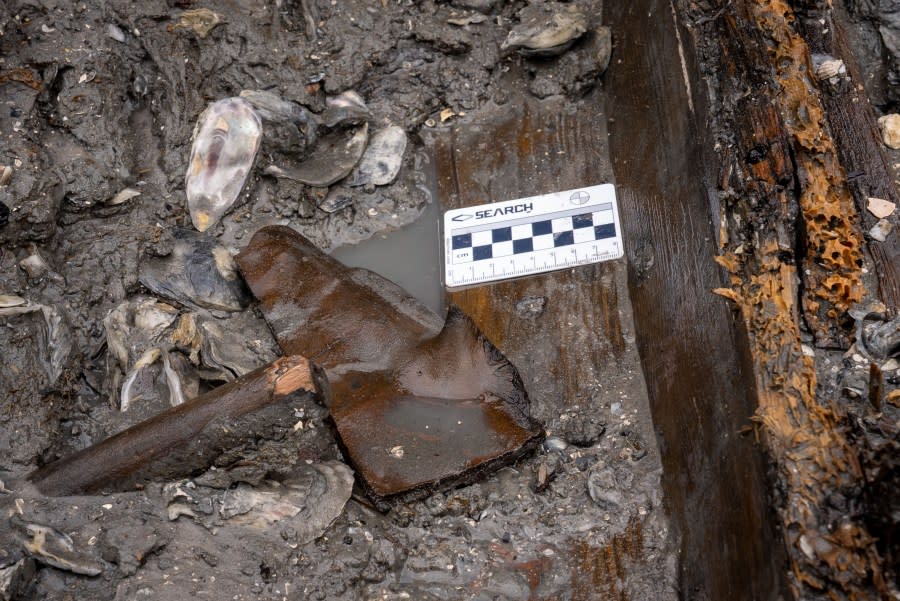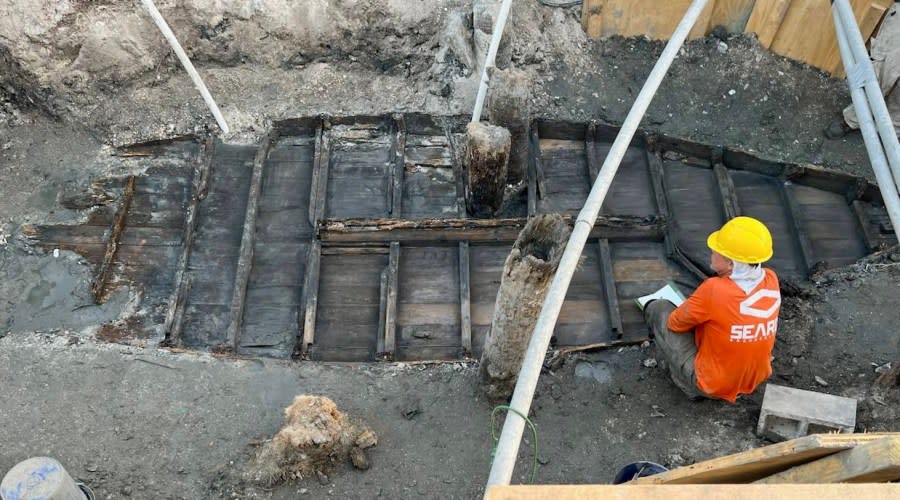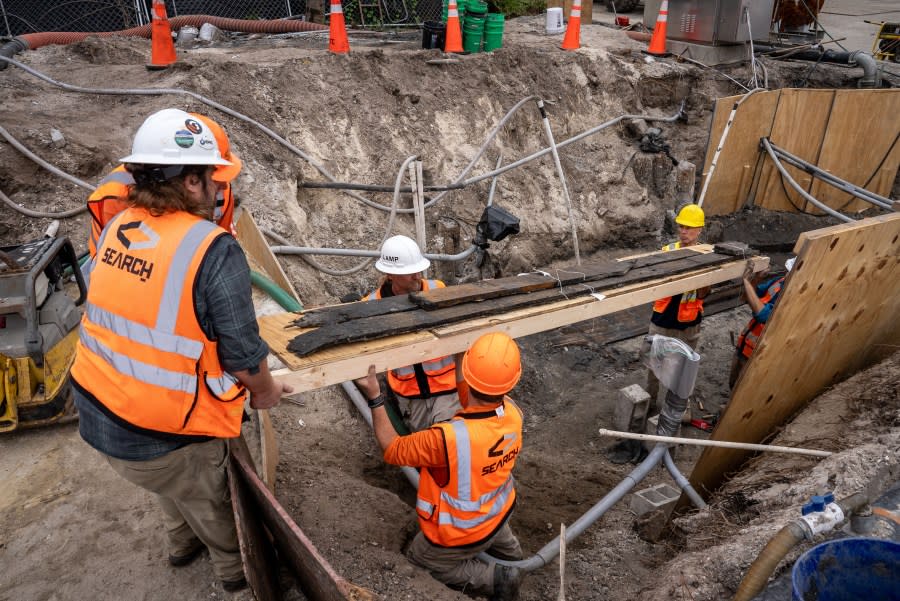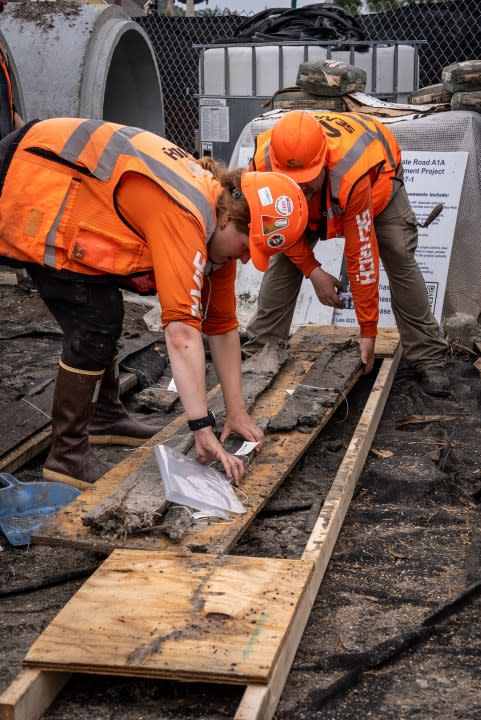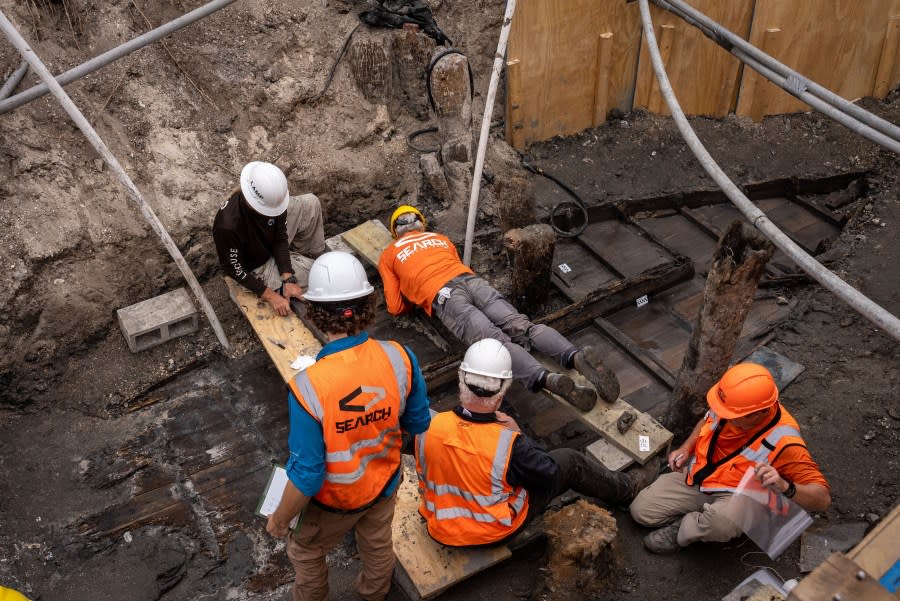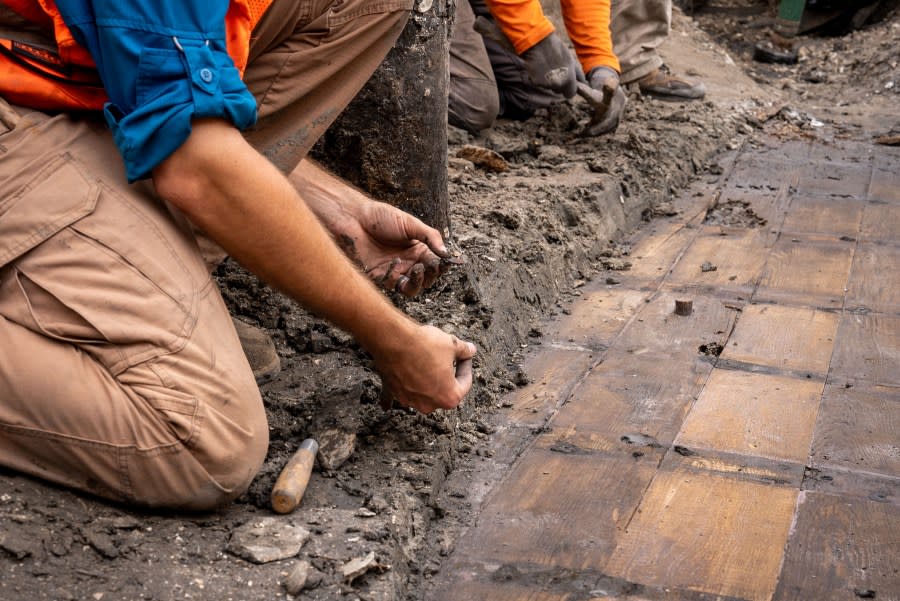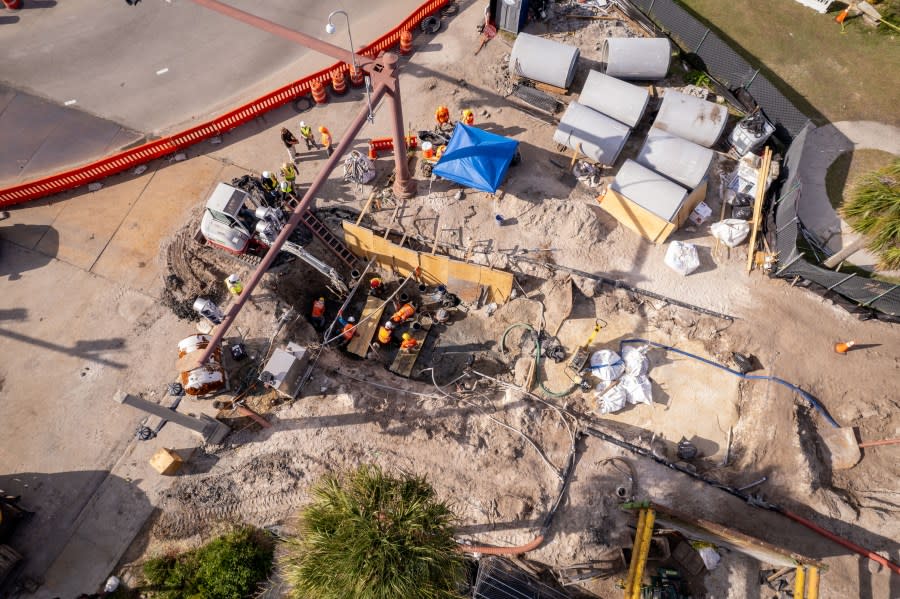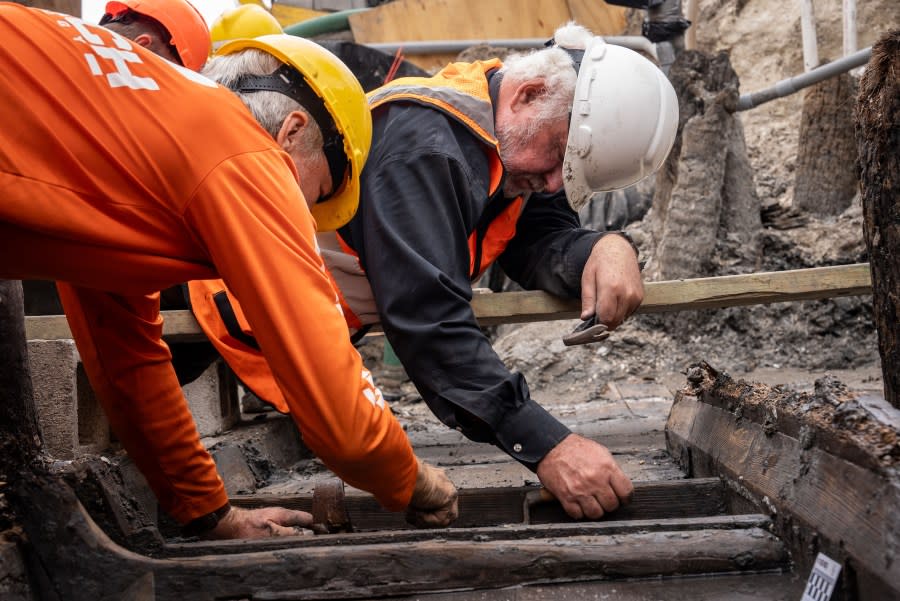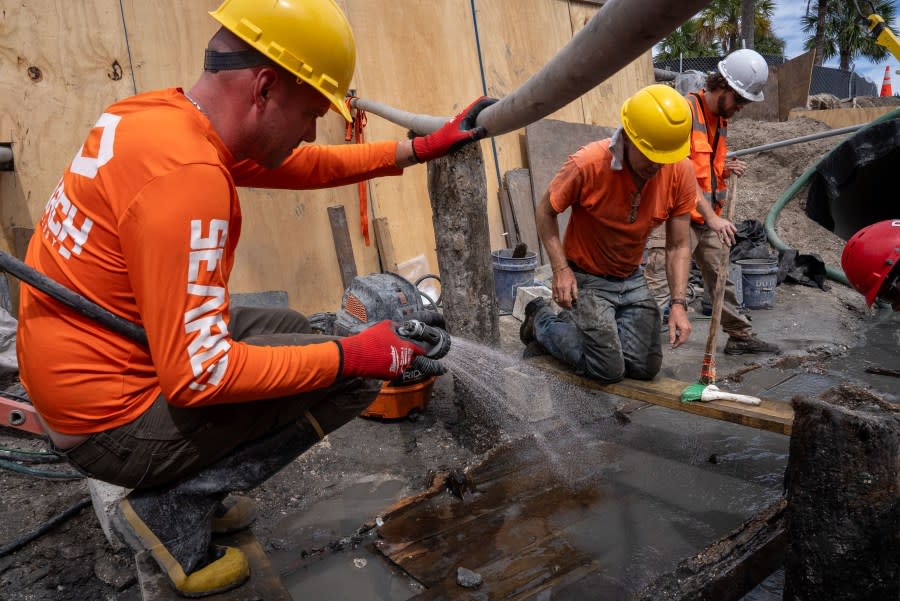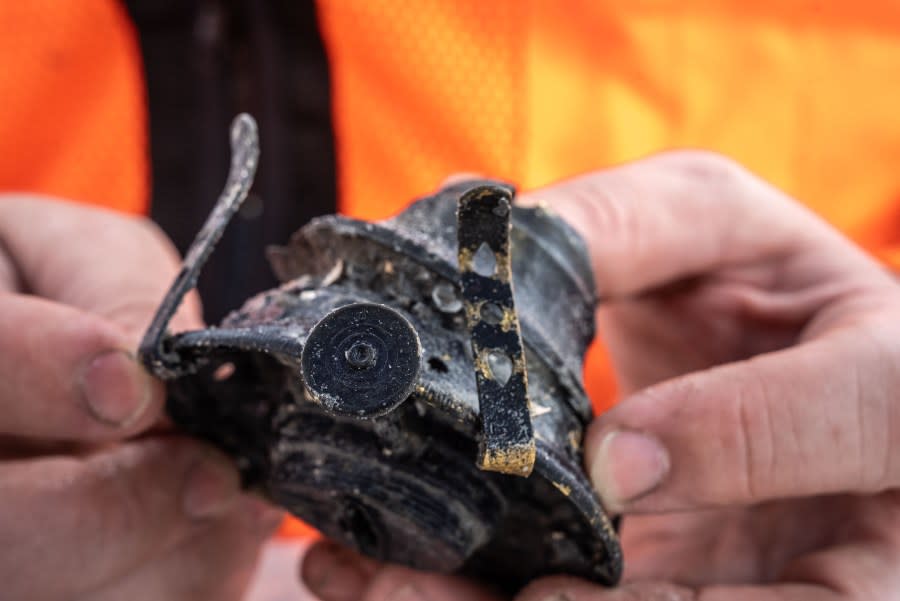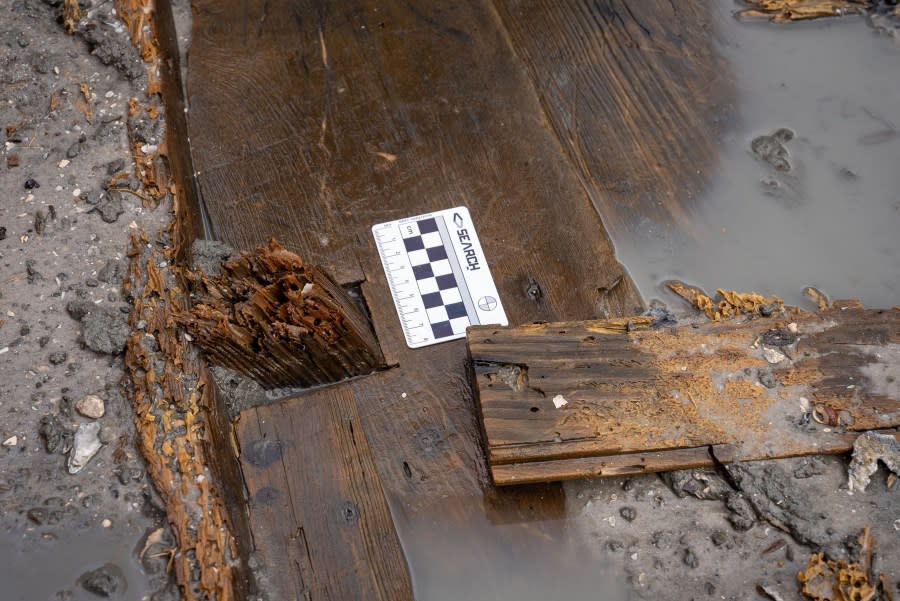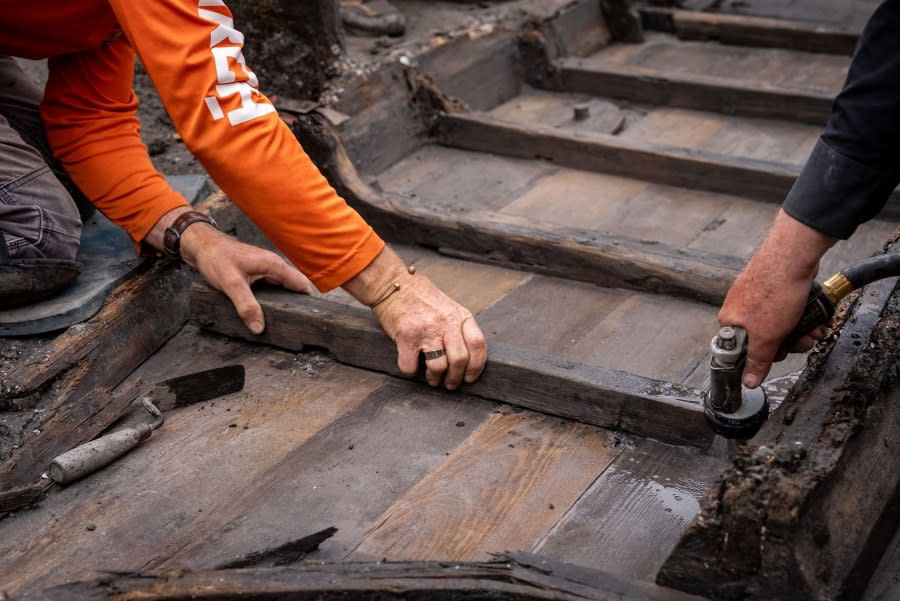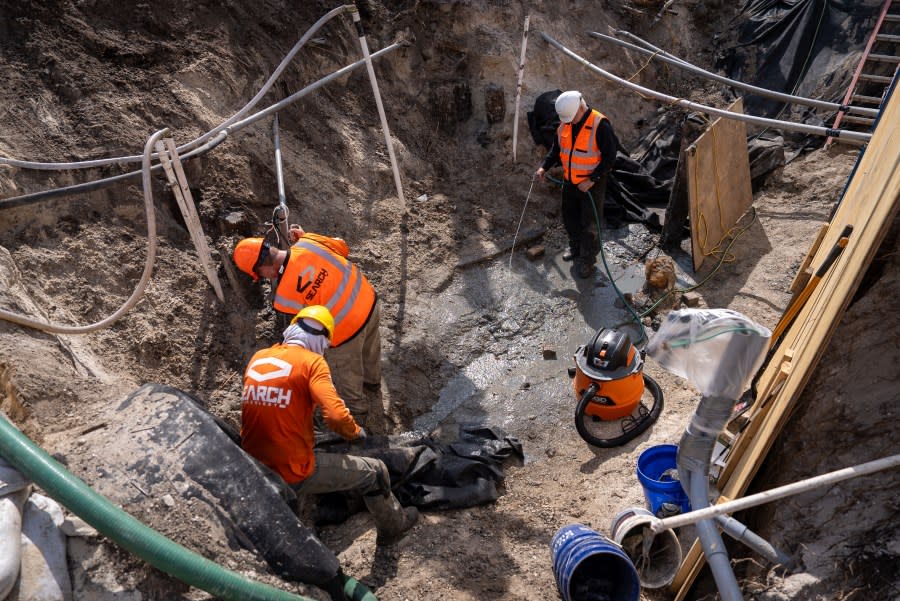‘An incredible find’: 1800s shipwreck unearthed in Florida during road project

- Oops!Something went wrong.Please try again later.
ST. AUGUSTINE, Fla. (WFLA) — Construction crews in Florida unearthed a shipwreck from the 19th century while working on a road project in downtown St. Augustine last week.
According to the Florida Department of Transportation (FDOT), crews discovered the nearly intact wooden vessel while working on State Road A1A near the Bridge of Lions for a draining improvement project that began earlier this year.
FDOT archeologists and experts believe the well-preserved boat is from the mid-to-late 1800s.
Artifacts found inside the wreck were mixed into the sediment and shells that buried it, as well as in a thin layer of mud that coated the hull. A wooden handle and the remains of a leather shoe are shown here as excavated. Credit: Daniel Fiore (SEARCH, Inc.) & Florida Department of Transportation, District Two. Crews painstakingly removed mud layer-by-layer to expose the vessel. Credit: Florida Department of Transportation, District Two. The archaeological team laid recovered planks on a stretcher of plywood to support the water-logged, easily broken wood as it was recovered intact and sent up to archaeological conservators for placement in fresh-water tanks for wet storage pending further analysis. Credit: Daniel Fiore (SEARCH, Inc.) & Florida Department of Transportation, District Two. SEARCH archaeologist Jessica Barnett and archaeological objects conservator Jessica Rusch prepare to place recovered hull planks into one of several temporary wooden wet-storage trays built by FDOT contractors Superior Construction, who worked closely to support the SEARCH team in the work of exposing the hull, providing electricity, water, and other support including machine removal of several feet of landfill that covered half the wreck. Credit: Daniel Fiore (SEARCH, Inc.) & Florida Department of Transportation, District Two. Archaeologists Dr. Sam Turner, Dr. James Delgado, Greg Hendryx, Matt Mele and Dr. Chuck Meide excavating the ship along its port (left) side. Palm log pilings driven into the wreck, possibly in the late 19th century, are visible alongside the team. Credit: Daniel Fiore (SEARCH, Inc.) & Florida Department of Transportation, District Two. SEARCH archaeologists kneel on the starboard (right) side of the hull after lifting out the only surviving outer hull plank that formed that side of the ship. Disassembly at this point in the project had cleared the hull down to the bottom hull planks and the centerboard trunk and its supporting timber. Credit: Daniel Fiore (SEARCH, Inc.) & Florida Department of Transportation, District Two. Aerial imagery of the site where SEARCH archaeologists discovered an 19th-century ship beneath a road in St. Augustine, Florida. Archaeologist Dr. Sam Turner was conducting archaeological monitoring as the FDOT project cut a trench for a sewer line in the city’s historic district. The contractor digging the trench carefully worked, and as the first glimpse of water-logged wood, Turner’s trained eye discerned the edge of the hull. SEARCH archaeologists Dr. Sam Turner (left) and Dr. James Delgado (right) carefully slide a flor (bottom “rib”) from its socket in the centerboard trunk of the ship. Credit: Daniel Fiore (SEARCH, Inc.) & Florida Department of Transportation, District Two. Archeologists carefully clean the hull of the vessel as crews map the exposed hull planking. The wreck was digitally and manually measured as it was exposed. Credit: Daniel Fiore (SEARCH, Inc.) & Florida Department of Transportation, District Two Close-up view of the base of the oil-fired lantern found inside the wreck. Credit: Daniel Fiore (SEARCH, Inc.) & Florida Department of Transportation, District Two. Crews painstakingly removed mud layer by layer to expose the vessel. Credit: Florida Department of Transportation, District Two. The saltwater burial of the vessel corroded the iron nails and spikes that once held it together. That made the systematic “reverse-construction” dismantling of the hull easier for maritime archaeologists whose careers have been spent understanding the anatomy of ships. Here, Drs. Sam Turner and James Delgado use water to slowly slide a wooden floor (bottom “rib”) from its position socketed into the central wooden structure of the vessel. Credit: Daniel Fiore (SEARCH, Inc.) & Florida Department of Transportation, District Two SEARCH archaeologists keeping the ship planks wet to preserve them. Credit: Daniel Fiore (SEARCH, Inc.) & Florida Department of Transportation, District Two.
“We believe the vessel may have sunk unexpectedly and, over time, was silted in. That is why it was preserved so well — it was encapsulated in soil and mud, so there was no air contact for it to decay. It’s truly an incredible find,” District 2 Secretary Greg Evans said in a statement.
This Florida slang phrase stumped Americans from other states and some Floridians
Since the area is historic in nature, FDOT started working with Southeastern Archaeological Research (SEARCH), a maritime archaeology team, which was able to help with the excavation.
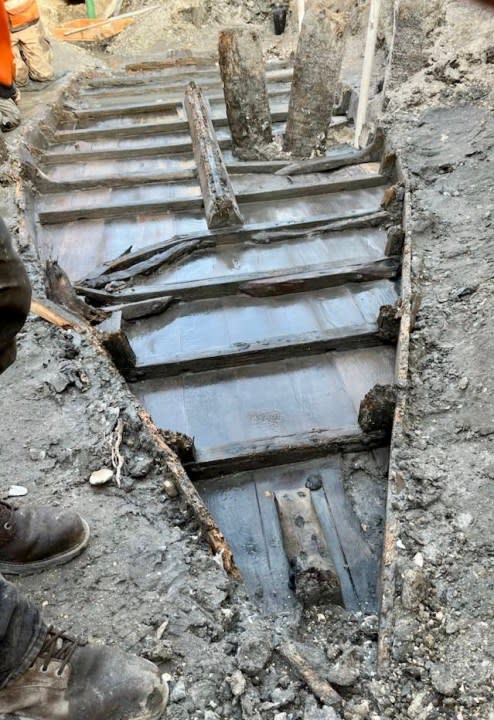
Credit: Florida Department of Transportation, District Two
“With every project we undertake, the Florida Department of Transportation is sensitive to the unique needs of the communities we serve, including the potential presence of historical sites and artifacts within construction sites,” Evans added. “We are grateful to our partners at SEARCH for their careful efforts to preserve this vessel, and we look forward to learning more about its significance to the region.”
Dr. James Delgado, Senior Vice President at SEARCH, who led the excavation and recovery of the boat, said experts believe the vessel was likely used to extract fish and shellfish from coastal waterways and offshore in the 19th century.
“We believe the vessel to be a small single-masted, shallow-draft sailing craft of the 19th century that was likely used to extract fish and shellfish from coastal waterways and directly offshore,” he said. “With a dedicated team, including support from the local community and the on-site construction team, we were able to extract the vessel in order to allow the important work on the community’s infrastructure to continue. We greatly appreciate FDOT’s commitment to cultural resources and in retaining SEARCH for this project.”
For the latest news, weather, sports, and streaming video, head to WesternSlopeNow.com.
